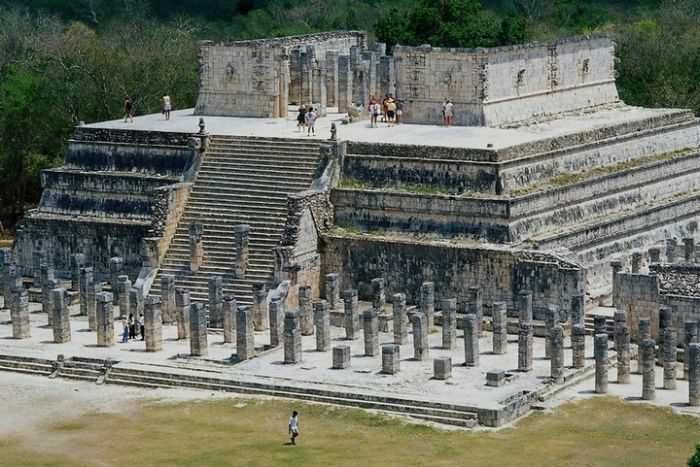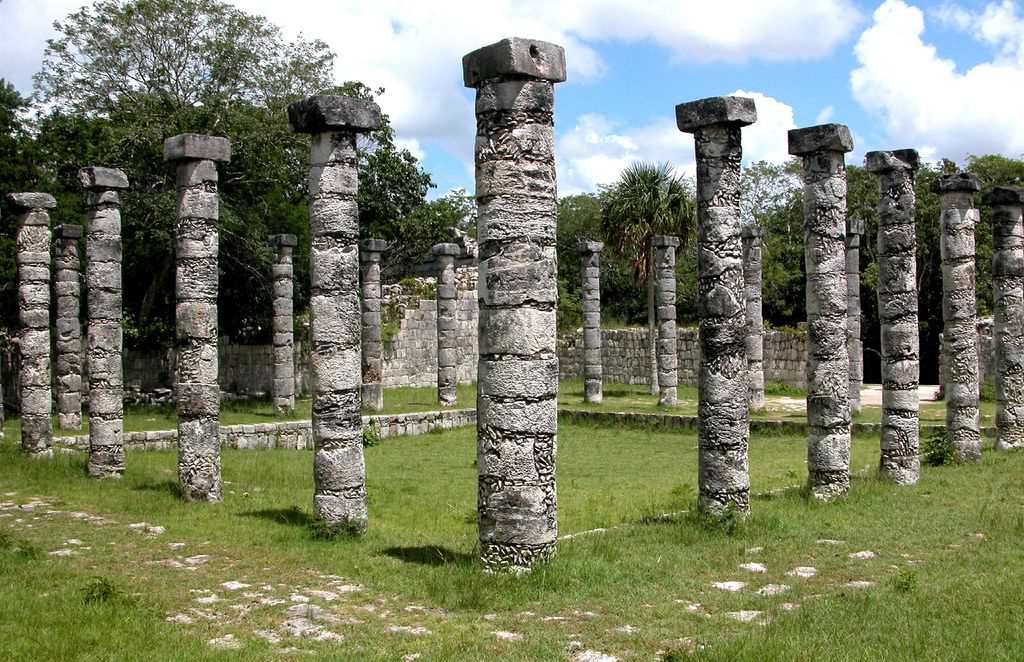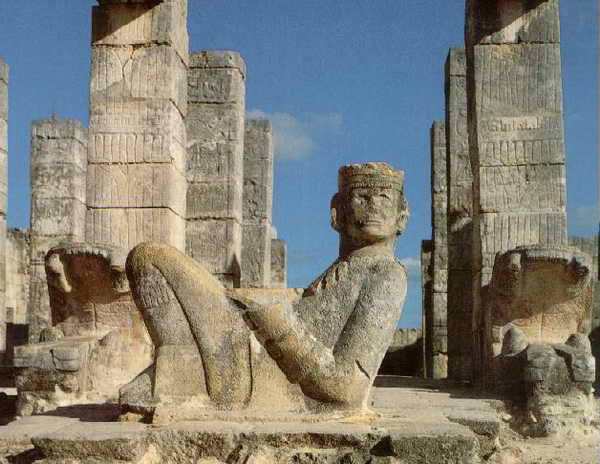Chichen Itza: description, history, excursions, exact address. Chichen Itza - are Mexico's most famous pyramids really that good?
In the Mexican state of Yucatan, 120 kilometers east of the city of Merida, there is ancient city Maya - Chichen Itza. The city arose in the 7th century AD. e., as a religious center. Three hundred meters from the main buildings of the city there was a sacred reservoir - a cenote, thanks to which the city received the name “Well of the Itza Tribe.” Crowds of pilgrims flocked here from all over Yucatan; roads began from the Sacred Reservoir that connected Chichen Itza with other pilgrimage centers. The sacred cenote also had another, more sinister name - “Well of Death”. According to Mayan legends, at the bottom of a well, the depth of which reached 50 meters, the rain god Chak lived, and in order to appease him and beg for rain, the Mayans threw rich gifts into the cenote in the form of gold, amber, rock crystal, mother-of-pearl, as well as the most beautiful girls of your tribe. Until now, many people believe in the magical power of the well and throw coins into it in the hope of fulfilling their cherished desires.
By the beginning of the 10th century great civilization The Maya began to decline, Indian tribes came from central Mexico to Yucatan, the largest of them were the Toltecs. The once prosperous Mayan cities fell under the blows of the Toltecs, part of the tribe left these places, others fell into submission to the conquerors. By the 11th century, Chichen Itza became the capital of the Toltec kingdom in the Mayan lands. It was during this period (X - XIII centuries), called by researchers the “Mexican period,” that the city flourished. Unique ones appear in Chichen Itza architectural structures, thanks to which the city was recognized as a monument of world significance. The main temple of Chichen Itza is dedicated to the patron saint of the Toltecs, Kukulcan, which means “Feathered Serpent” in Mayan language.  The Temple of Kukulcan is one of the symbols of Mexico, its business card. The Pyramid of Kukulkan, whose height reaches 30 meters, is located on a huge stone terrace. There are four staircases leading to the top of the temple, where the ancient Mayans performed sacrifice rites, which are oriented to the cardinal points. A stone balustrade frames the stairs, it begins at the bottom in the form of a snake's head and continues to the very top of the pyramid in the form of a snake's body. During the spring and autumn equinoxes, you can see a striking picture: the rays of the sun fall on the balustrade in such a way that it seems that the revived Feathered Serpent, wriggling, begins to slowly crawl down. Each staircase of the temple has 91 steps, and all four staircases, together with the platform terrace, have 365 steps, which corresponds to the number of days in a year.
The Temple of Kukulcan is one of the symbols of Mexico, its business card. The Pyramid of Kukulkan, whose height reaches 30 meters, is located on a huge stone terrace. There are four staircases leading to the top of the temple, where the ancient Mayans performed sacrifice rites, which are oriented to the cardinal points. A stone balustrade frames the stairs, it begins at the bottom in the form of a snake's head and continues to the very top of the pyramid in the form of a snake's body. During the spring and autumn equinoxes, you can see a striking picture: the rays of the sun fall on the balustrade in such a way that it seems that the revived Feathered Serpent, wriggling, begins to slowly crawl down. Each staircase of the temple has 91 steps, and all four staircases, together with the platform terrace, have 365 steps, which corresponds to the number of days in a year.  At the very top of the pyramid there is a small temple in which sacrifices took place. The main entrance to it, located on the north side, is decorated with columns depicting writhing snakes, and two more pairs of columns decorate the gloomy sanctuary inside. Here, on the altar of the temple, the priests daily tore out the heart of a person sacrificed to Kukulkan. In a secret room inside the pyramid, the sacred “Jaguar Mat” was discovered - a stone throne of the ruler of the city in the form of a jaguar figure. The jaguar's body is painted fiery red, the eyes and spots on the skin are made of jade stones, and the fangs are made of volcanic stone. The Temple of Kukulkan itself is a magnificent architectural monument of the Toltec period. To the right of the Temple of Kukulkan is the Temple of the Warriors, to the left is the Temple of the Jaguars, their walls are decorated with carved paintings. The presence of these temples enhances and emphasizes the importance of the main temple of Kukulkan.
At the very top of the pyramid there is a small temple in which sacrifices took place. The main entrance to it, located on the north side, is decorated with columns depicting writhing snakes, and two more pairs of columns decorate the gloomy sanctuary inside. Here, on the altar of the temple, the priests daily tore out the heart of a person sacrificed to Kukulkan. In a secret room inside the pyramid, the sacred “Jaguar Mat” was discovered - a stone throne of the ruler of the city in the form of a jaguar figure. The jaguar's body is painted fiery red, the eyes and spots on the skin are made of jade stones, and the fangs are made of volcanic stone. The Temple of Kukulkan itself is a magnificent architectural monument of the Toltec period. To the right of the Temple of Kukulkan is the Temple of the Warriors, to the left is the Temple of the Jaguars, their walls are decorated with carved paintings. The presence of these temples enhances and emphasizes the importance of the main temple of Kukulkan.  Chichen Itza also has its own observatory; it was intended for observing and studying the planets, in particular Venus. One of the oldest buildings is the Palace of the Nuns, which is of interest for its stone carvings and masks of the god Chaka. The inhabitants of Chichen Itza were excellent artists and craftsmen, as evidenced by the paintings carved on the walls of the temples, sculptures of deities, and various artistic crafts. In 2007, Chichen Itza was recognized as one of the seven new wonders of the world.
Chichen Itza also has its own observatory; it was intended for observing and studying the planets, in particular Venus. One of the oldest buildings is the Palace of the Nuns, which is of interest for its stone carvings and masks of the god Chaka. The inhabitants of Chichen Itza were excellent artists and craftsmen, as evidenced by the paintings carved on the walls of the temples, sculptures of deities, and various artistic crafts. In 2007, Chichen Itza was recognized as one of the seven new wonders of the world.
